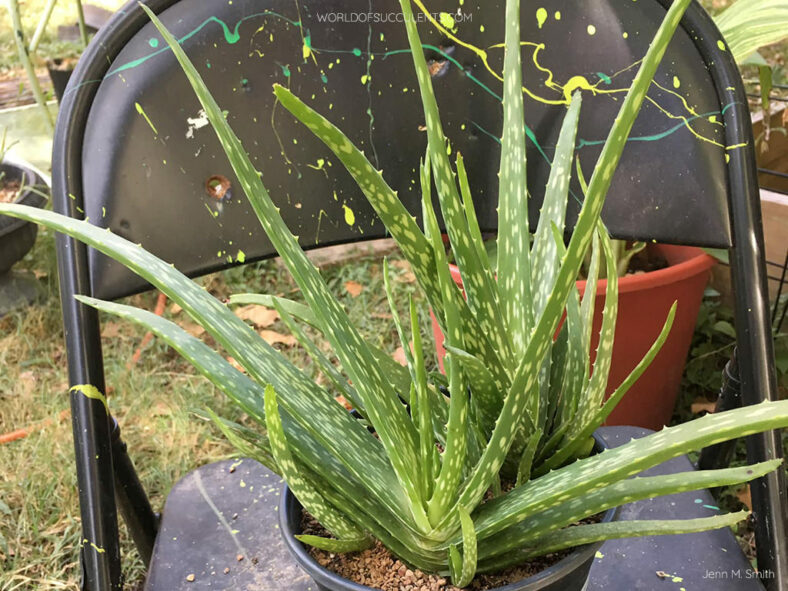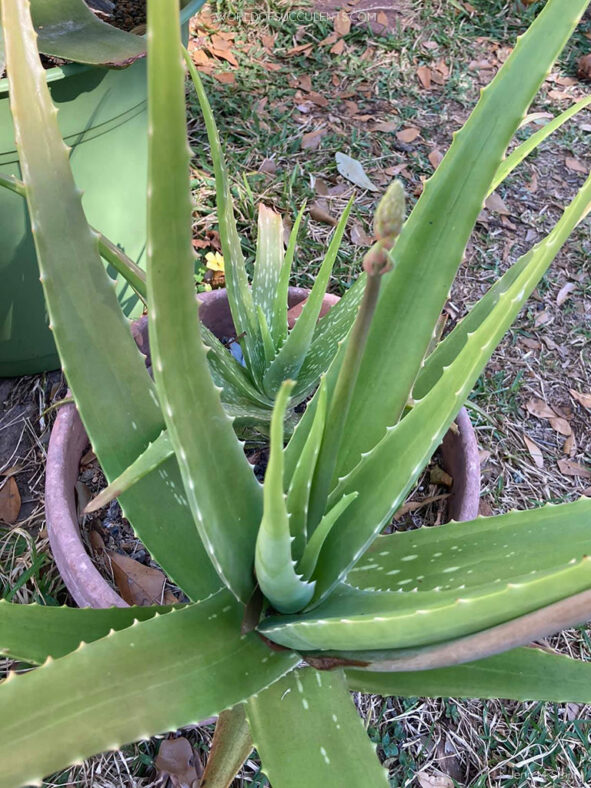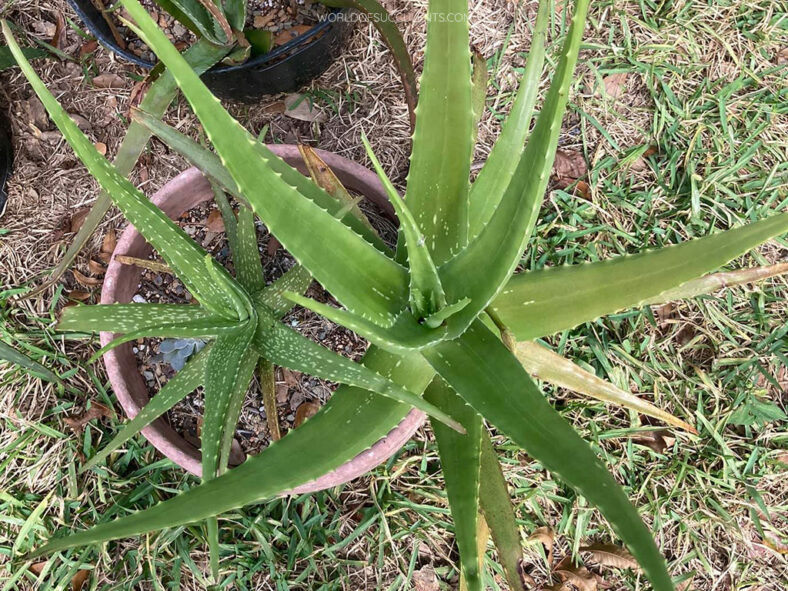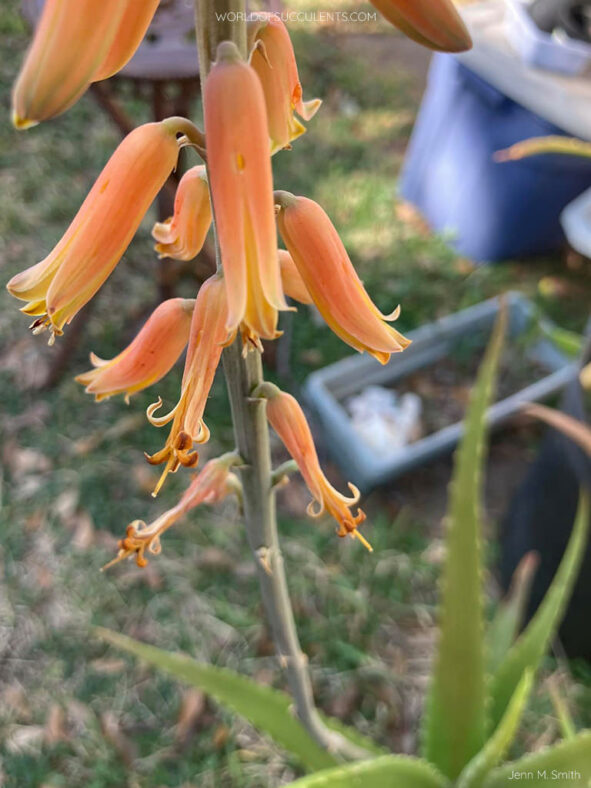Aloe vera var. chinensis is probably even more common than the "true" Aloe vera, and often, when you say Aloe vera, this is the plant many people think of.
Scientific Name
Aloe vera var. chinensis (Loudon) Baker
Accepted Scientific Name
Aloe vera (L.) Burm.f.
Common Name(s)
Spotted Medicinal Aloe
Synonym(s)
Aloe barbadensis subsp. chinensis, Aloe barbadensis var. chinensis, Aloe chinensis, Aloe vera subsp. chinensis
Scientific Classification
Family: Asphodelaceae
Subfamily: Asphodeloideae
Genus: Aloe
Etymology
The varietal epithet "chinensis (pronounced chi-NEN-sis)" means "of or from China." However, the plant has no connection to China unless Chinese traders brought living plants of this orange-flowered Aloe from East Africa to China.
Origin
Aloe vera var. chinensis has long been debated as either an Aloe vera hybrid or a form of Aloe officinalis or Aloe massawana. Learn more from AloeHoarder.
Description
Aloe vera var. chinensis is a small, prolific succulent with upright, spotted, gray-green leaves with whitish, soft teeth along the margins. It can grow up to 18 inches (45 cm) tall, and it is smaller and keeps the spots on the leaves longer than the "true" Aloe vera. The offsets start fan-shaped but grow into rosettes if given the right conditions. The leaves take on a brown hue when exposed to intense sunlight.
The flowers are orange or pinkish-orange and usually more spaced out on the stalk than the yellow, densely packed flowers of "true" Aloe vera. This plant usually blooms in spring.

How to Grow and Care for Aloe vera var. chinensis
Light: When growing Aloe vera var. chinensis indoors, place it in a window with plenty of bright indirect light. Rotate the pot once or twice a week to ensure all sides of the plant receive equal lighting. Outdoors, the plant prefers light shade, especially during the hottest parts of the day.
Soil: Great drainage is essential for growing this plant because too much moisture for an extended period can cause root rot. Use commercial soil for succulents, or make your own well-draining mix.
Temperature: When temperatures shift below 50 °F (10 °C), it is time to bring this plant inside. It tolerates heat fairly well but will not survive a hard frost. Aloe vera var. chinensis grows best in USDA Plant Hardiness Zones 9b to 11b, with average minimum winter temperatures ranging from 25 to 50 °F (-3.9 to 10 °C).
Watering: This plant needs regular watering but can tolerate drought conditions for short periods. Water deeply, but only when the soil is completely dry to the touch, and do not let water stand in the rosettes. Cut back on watering during the winter months.
Fertilizing: Although it generally does not require fertilizer, Aloe vera var. chinensis will benefit from extra nutrients. Use a water-soluble fertilizer diluted to half the recommended strength.
Repotting: Repot only as needed during spring. Pick a container that is one size larger and has drainage holes.
Propagation: To propagate Aloe vera var. chinensis, remove the offsets from a mature plant from late spring to early summer. It is also easy to start from seeds. For best results, sow the seeds during the warm months.
Learn more at How to Grow and Care for Aloe.
Toxicity of Aloe vera var. chinensis
Aloe vera var. chinensis is non-toxic to people but is mild to moderately toxic to pets.
Links
- Back to genus Aloe
- Succupedia: Browse succulents by Scientific Name, Common Name, Genus, Family, USDA Hardiness Zone, Origin, or cacti by Genus
Photo Gallery
Click on a photo to see a larger version.


